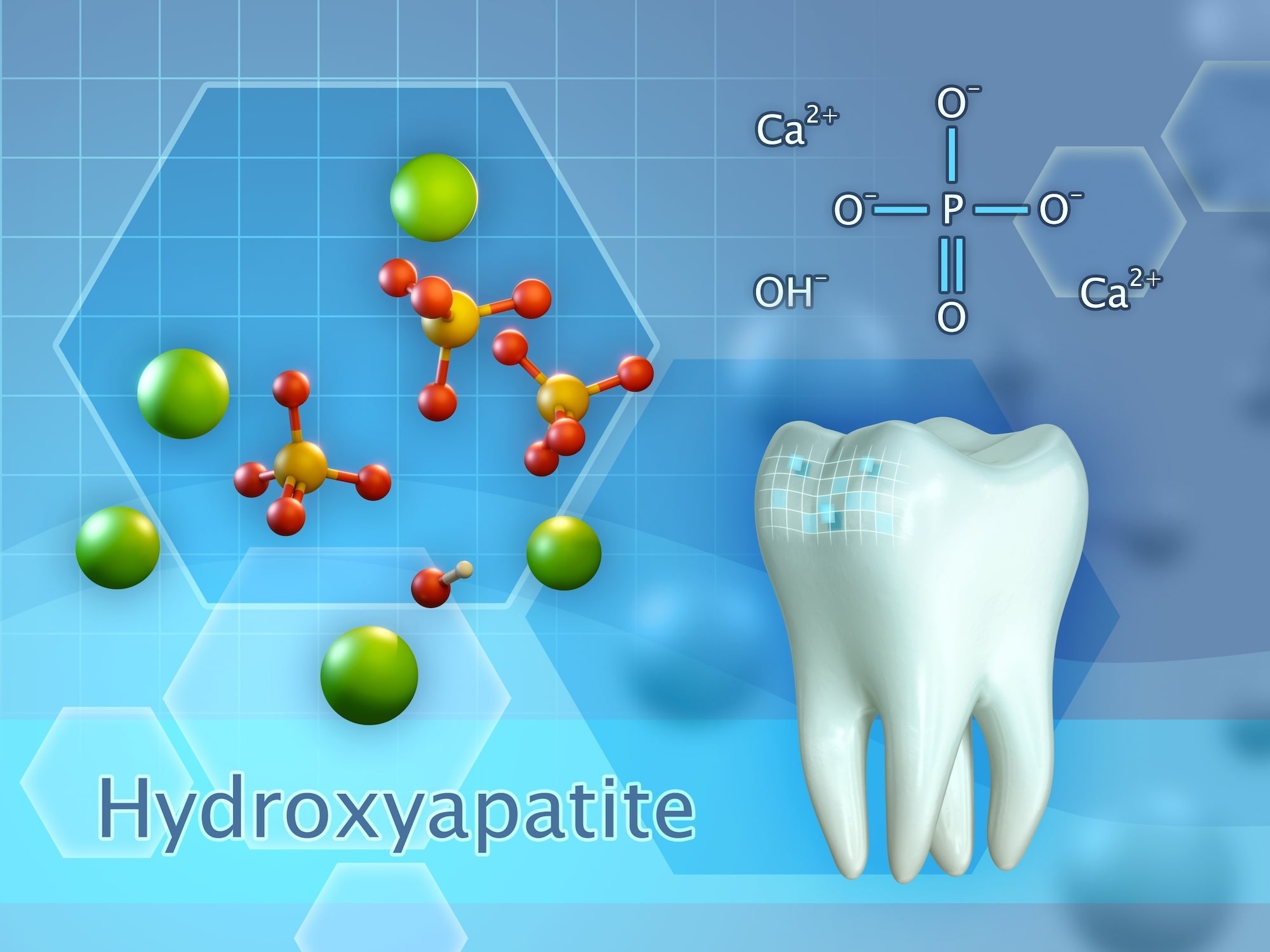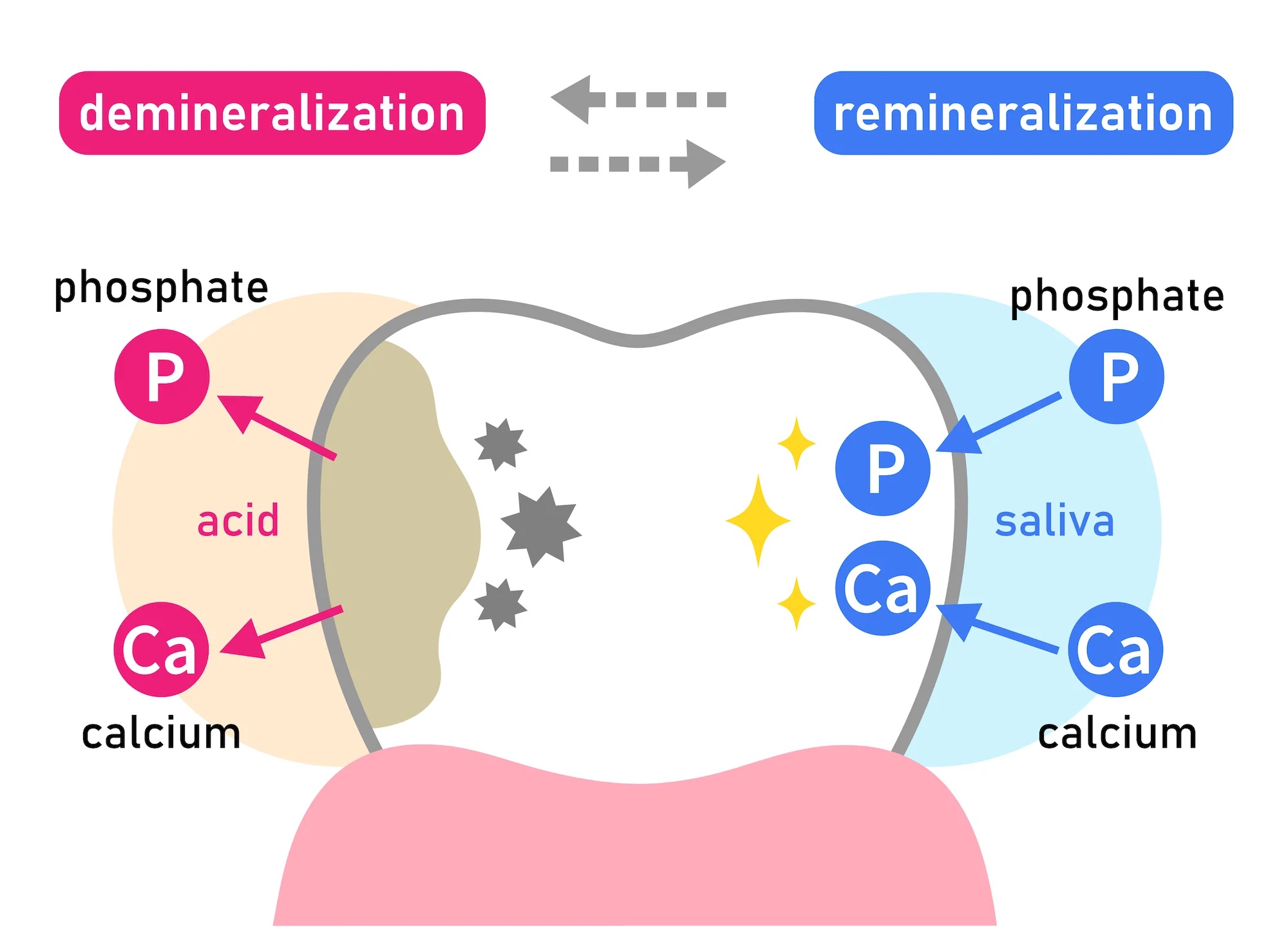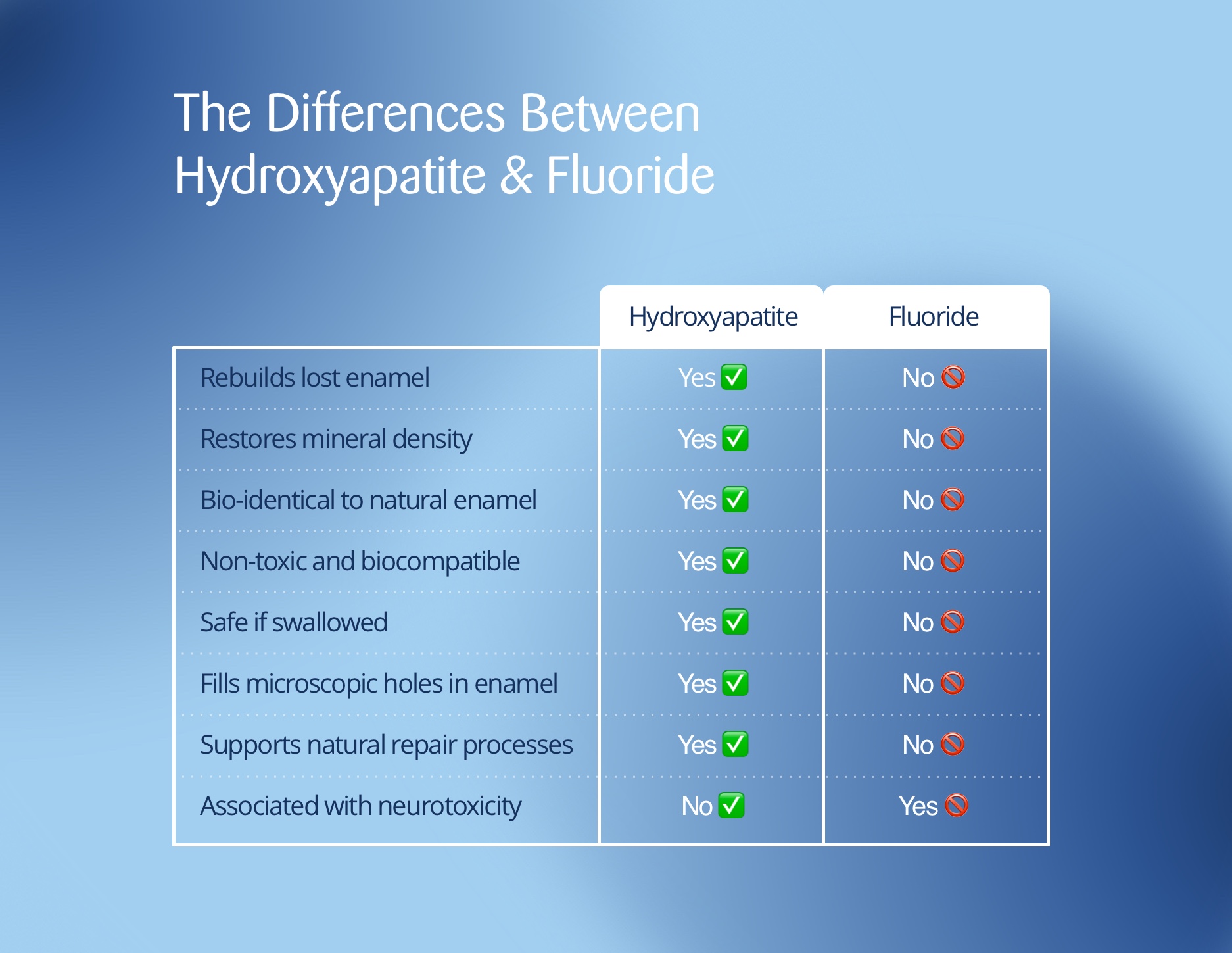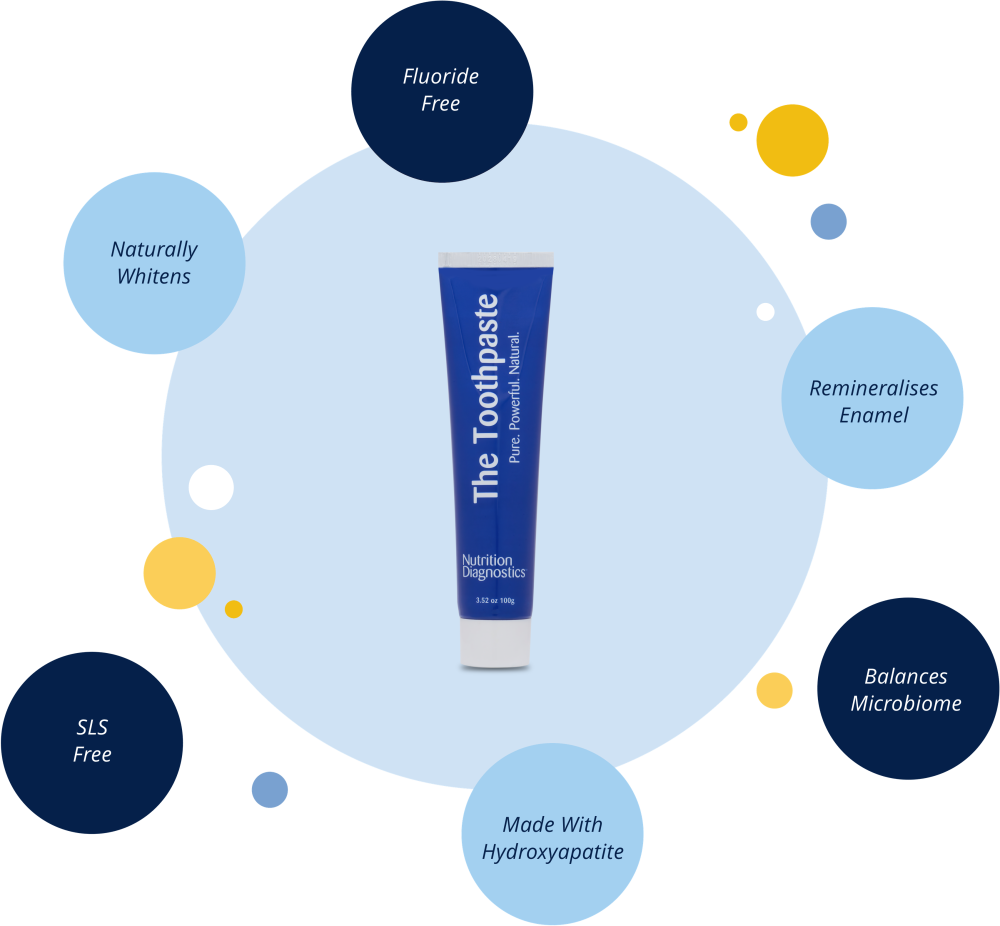Hydroxyapatite Toothpaste: What is it and is it Better for You?
Fluoride toothpaste was first introduced in 1955, following research in Grand Rapids, Michigan, where the addition
of fluoride to the local water supply resulted in a significant decline in tooth decay. Since then, fluoride has
become a staple in oral care products worldwide.
However, growing awareness of the potential risks associated with fluoride from toothpaste and water has prompted
many to seek safer, more natural alternatives. One such alternative toothpaste ingredient that is gaining more
attention is hydroxyapatite.
Originally studied by NASA in the 1970s to address bone and tooth loss in astronauts,
hydroxyapatite has since become a star ingredient in high-performance, natural toothpaste. But what exactly is it — and can it really
replace fluoride, or perhaps even outperform it? Let's explore the science, the
benefits, and why hydroxyapatite toothpaste may be the future of oral care.

What Is Hydroxyapatite?
Hydroxyapatite is a naturally occurring mineral form of calcium apatite. Notably, it makes up about 97% of tooth enamel and 70% of dentin. In essence, your teeth are made of it.
As a biomimetic material, synthetic hydroxyapatite is chemically identical to the enamel in your teeth. This makes
it highly biocompatible and uniquely capable of repairing microscopic damage to the enamel surface — without
introducing foreign or potentially toxic substances into the body.
What Is Nano-Hydroxyapatite?
Nano-hydroxyapatite refers to hydroxyapatite particles engineered at the nanometer scale (less
than 100 nanometres in size). At this size, the particles are small enough to penetrate the microscopic pores in damaged
enamel
and bind directly to the tooth's surface. This is what leads many to believe nano-hydroxyapatite is superior to hydroxyapatite (which is
larger than 100 nanometers in size) in toothpaste.
However, while its performance in remineralisation is well noted, the safety of daily exposure to such small particles has raised questions in the scientific community, especially regarding the ability of nano-hydroxyapatite to cross biological
barriers
and accumulate in sensitive tissues (like the liver, kidney and brain).
Hydroxyapatite vs Nano-Hydroxyapatite: A Comparison
Both hydroxyapatite (HA) and nano-hydroxyapatite (nano-HA) are forms of the same compound — calcium apatite — but
their particle size sets them apart, and with it, their mechanism of action and safety
profile.
While nano-hydroxyapatite offers deeper penetration, the trade-off lies in the unknowns surrounding its use. Its ability to bypass the body's protective filters and enter circulation introduces potential health risks. In contrast, microcrystalline hydroxyapatite remains safely confined to the tooth's surface, where it's needed most and entirely safe.
Why We Favour Hydroxyapatite Over Nano-Hydroxyapatite in Toothpaste
We consider hydroxyapatite safer because its larger particle size prevents it from being absorbed into the bloodstream. Even if swallowed, it simply passes through the digestive system, releasing calcium and phosphate minerals that the body already recognises and uses.
Nano-hydroxyapatite, on the other hand, is small enough to cross biological barriers. It may enter the bloodstream,
accumulate in organs, and even reach the brain, the risks of which are compounded by systemic exposure and bioaccumulation,
as would be the case when using it in a toothpaste.

What Does Hydroxyapatite Do in Toothpaste?
In toothpaste formulations, hydroxyapatite serves as an active remineralising agent. This means that instead of simply coating the teeth, it mimics and replenishes the actual mineral structure of enamel, physically integrating with the tooth.
It also creates a smoother surface on the enamel, making it harder for plaque and bacteria to accumulate. This not only protects
against cavities but also reduces biofilm formation, a primary cause of gum disease and inflammation.
How Does Hydroxyapatite Toothpaste Help Remineralise Enamel?
Tooth enamel is the hardest substance in the human body — but unlike other tissues, it contains no living cells. This means that once enamel is significantly worn down or eroded, it cannot regenerate or grow back on its own. There are no biological mechanisms for enamel to self-heal once it's lost.
However, early-stage damage to enamel can be repaired through a process called remineralisation. This doesn't rebuild enamel from scratch but instead restores its mineral density by replenishing areas that have been weakened by acid erosion or demineralisation. For this to happen, the enamel needs access to the right building blocks — namely, calcium and phosphate — in a form the body can easily use.
This is where hydroxyapatite toothpaste excels. Because hydroxyapatite is chemically identical to the mineral that makes up enamel, it can directly bind to and integrate with the tooth surface — filling in micro fissures, reinforcing weak spots, and effectively restoring smoothness, hardness, and function without relying on living tissue.
Facilitating remineralisation is one of the main benefits of using hydroxyapatite toothpaste compared to traditional fluoride toothpaste.

Hydroxyapatite Toothpaste vs Fluoride Toothpaste
Hydroxyapatite toothpaste works in a fundamentally different way to fluoride toothpaste. Here's how.
When fluoride is applied to the tooth surface (via toothpaste), it reacts with free calcium and phosphate ions in your saliva to form fluorapatite — a hard, acid-resistant mineral that coats the outermost layer of the enamel. This layer is designed to resist acid attacks from bacteria, which in turn helps reduce the risk of cavities.
Hydroxyapatite, by contrast, acts directly. As the primary mineral your teeth are already made of, synthetic
hydroxyapatite used in toothpaste delivers bioavailable calcium and phosphate in the same crystalline form that
natural enamel is made of — allowing it to bind to and integrate with demineralised
enamel.
This makes it particularly effective in reversing early decay, reducing sensitivity, and rebuilding the tooth's
surface.
Toxicity: The Main Difference Between Hydroxyapatite Toothpaste and Fluoride Toothpaste
The main differences between Hydroxyapatite Toothpaste and Fluoride Toothpaste lie in their safety profiles.
Fluoride poses serious health concerns — including the risk of neurological toxicity, IQ loss in children and a host of systemic health issues as it bioaccumulates over time (via toothpaste and water consumption).
Hydroxyapatite, on the other hand, is non-toxic, safe to swallow, and naturally
integrates with your tooth structure. Clinical trials have shown it to be equally (if not more) effective at reducing cavities
without the risk of toxicity.

The Benefits of Using Hydroxyapatite Toothpaste
- Enamel Repair: Fills in surface defects and strengthens tooth structure.
- Cavity Prevention: Comparable to fluoride in protecting against decay.
- Reduced Sensitivity: Seals exposed dentinal tubules to reduce pain.
- Biocompatibility: Non-toxic, safe for children, and pregnancy-safe.
- Whitening Effect: Smooths enamel, enhancing natural brightness.
-
Plaque Reduction: Makes enamel less hospitable to bacteria.
Our Hydroxyapatite Toothpaste: The Toothpaste
Formulated by Dr Eric Davis and backed by over 40 years of clinical insights, our natural toothpaste uses hydroxyapatite as one of its key ingredients.
Made from a unique blend of hydroxyapatite, sodium bicarbonate, hydrated silica (derived from bamboo extract), essential oils, hydrogen peroxide, and xylitol, The Toothpaste is an all natural product. It is free from fluoride, SLS, titanium dioxide, and other chemicals commonly found in conventional toothpastes.
Importantly, our hydroxyapatite toothpaste is not only non-toxic but is formulated to be more efficacious. Every
ingredient is carefully selected for its ability to strengthen enamel, support the microbiome, and promote overall
body wellbeing. It is a toothpaste that reflects our vision of holistic health.

Improve Your Oral Health with Our Hydroxyapatite Toothpaste
Whether you're concerned about enamel erosion and sensitivity or want a cleaner, safer,
smarter alternative to fluoride, our hydroxyapatite toothpaste offers a new gold standard in oral care.
Try our hydroxyapatite
toothpaste
and experience what modern science and nature can achieve when they come together.
Because when your teeth are made of it, shouldn't your toothpaste be too?

